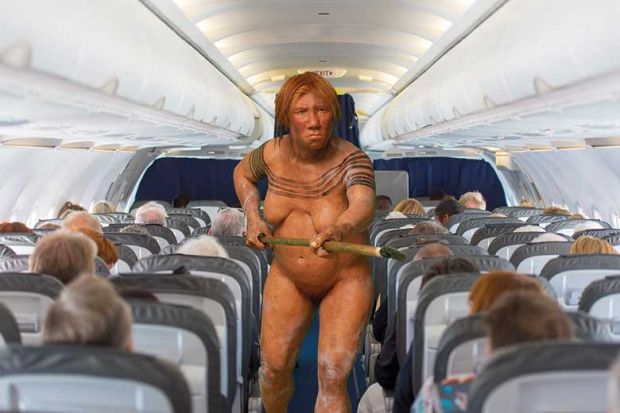The discovery of a Neanderthal skeleton up to 90,000 years old was, for archaeologist Christopher Hunt, a “career-defining moment” that he had long dreamed of.
Professor Hunt, a researcher in earth sciences at Liverpool John Moores University, made the discovery with colleagues during a dig in Kurdish Iraq last summer. What he had not anticipated, however, was the dilemma that would come with it: how to get the precious remains back home for testing.
“The answer, when it eventually came, was relatively simple,” he told Times Higher Education. “The fossilised remains would be packaged up in a suitcase and carried to Liverpool by passenger plane, where it could be carefully preserved and tested before its eventual return. What could possibly go wrong?”
Problems arose once the group arrived at the airport in Erbil. Although all the correct permissions for transport were in place, the find had become a big story in Kurdish media and, overwhelmed by the scale of responsibility of admitting the Neanderthal, airport staff declined to allow the suitcase on board, Professor Hunt said.
Booked on an overnight flight to Heathrow, the rest of the team left Professor Hunt and the remains behind, where he would spend eight days persuading Iraqi customs officers to let them fly.
“It was incredibly stressful,” he said. “We had taken her from a big fridge at the camp in Erbil, then wrapped several layers of bubble wrap as insulation to keep ‘our friend’ as safe as possible for the flight. But the longer that went on, the higher the risk of deterioration and damage became.”
Eventually, permission to fly was granted with the arrival of the Neanderthal’s very own “passport” – detailing full photo documentation from the authorities of the exporting country and permissions to get past immigration in the UK.
“The only thing to do, it seemed, was to buy a ticket for the seat next to me and strap her in,” said Professor Hunt, ”which may have got some strange looks.”
Professor Hunt described the body as looking, at the moment of discovery, “rather like a damp digestive biscuit after too much dunking”, but the fossilised remains had nonetheless been well preserved by the surrounding cave environment, making the find “arguably one of the most important on record”.
Once back in the UK, Professor Hunt “hired a car and ramped up the air conditioning all the way home even though it was freezing outside. It seemed the polite thing to do.”
For now, the Neanderthal resides at the McDonald Institute for Archaeological Research at the University of Cambridge, where the remains will undergo testing before their eventual return to Iraq. “We’ll have her passport ready,” Professor Hunt said.
POSTSCRIPT:
Print headline: Neanderthal gets a ticket to ride
Register to continue
Why register?
- Registration is free and only takes a moment
- Once registered, you can read 3 articles a month
- Sign up for our newsletter
Subscribe
Or subscribe for unlimited access to:
- Unlimited access to news, views, insights & reviews
- Digital editions
- Digital access to THE’s university and college rankings analysis
Already registered or a current subscriber?







